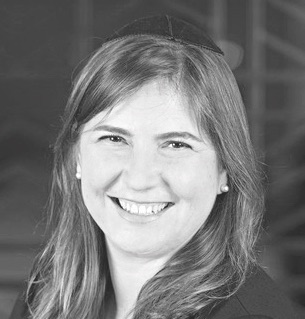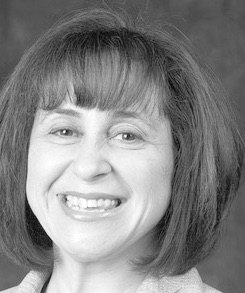 Photo from Pixnio.
Photo from Pixnio. PARSHA: CHAYEI SARA, Genesis 24:63-65
“And Isaac went out walking in the field toward evening and, looking up, he saw camels approaching. Raising her eyes, Rebecca saw Isaac. She alighted from the camel and said to the servant, ‘Who is that man walking in the field toward us?’ And the servant said, ‘That is my master.’ So she took her veil and covered herself.”
Rabbi Richard Camras
Shomrei Torah Synagogue, West Hills

“Isaac went out walking in the field.” According to Rashi, the word “walking,” lasuach, is translated as supplication or prayer. Tradition holds that Isaac went out to meditate and pray for the success of Abraham’s servant, who had been sent to find a wife for Isaac. From the verse that follows, we infer that his prayer immediately was answered with the appearance of Rebecca.
If only prayer had such immediate efficacy. Our own experience with prayer is vastly different. Even with the greatest of kavannah, or intention, we often find that our prayers feel futile — haltingly and stutteringly difficult. It is not for words that we are wanting — our liturgy is filled with voluminous ways to express what we desire our hearts should feel. How can we bring those words to move us, so that our prayer experiences are not empty, squandered moments deficient of meaning and gratification?
Perhaps like Isaac, who our sages explain established the afternoon Mincha service, we need to establish regular moments of reflection. As Abraham Joshua Heschel reminds us, “Prayer is not a stratagem for occasional use, a refuge to resort to now and then. It is rather an established residence for the innermost self…. [A] soul without prayer is a soul without a home.” Prayer, for Heschel, “serves to save the inward life from oblivion … to alleviate anguish … to partake of God’s mysterious grace and guidance.” May we have the wisdom to find a heart and soul open to such prayer.
Rabbi Heather Miller
Congregation Beth Chayim Chadashim, Los Angeles

Rebecca is a woman of action. She is introduced as a bearer of water in the ancient world. A servant tells her that he was sent to find a wife for his master’s son, and she decides to meet him. In this selection of text, she raises her eyes, she alights from her camel, and she inquires as to the identity of the man in the field.
Her final action here is to take her veil to cover herself. At first, it may appear that she has become uncharacteristically submissive, as if to shy away from her intended. But midrash suggests that in that field Isaac is praying.
Rebecca, in turn, makes the conscious decision to cover herself so that when Isaac first sees her, she has the appearance of a veiled Torah. In this way, she avoids a male gaze that might otherwise objectify her, and instead becomes sacred, holy and full of allure. So, he relates to her this way, taking her into his mother Sarah’s tent — a Tent of Meeting of sorts, not unlike the tabernacle — to commune with her. There, his prayers are answered. He is comforted after the death of his mother, he finds the woman his father prayed he would find, and he is no longer lonely.
This is the story of an independent woman who asserts her agency and answers many prayers.
Rabbi Shmuel Herzfeld
Ohev Sholom–The National Synagogue, Washington, D.C.

When Rebecca sees Isaac, she commits to marriage and covers herself out of modesty. It is axiomatic to marriage that intimacy be associated with privacy. For much of Jewish history, this was also the principal approach to women’s participation in public religious leadership roles.
This is no longer a tenable position. Recently the Orthodox Union (OU) argued that every synagogue should have on staff women who are religious teachers. But the OU has not endorsed the notion of women clergy. Thus, it is not exactly where our shul is right now, but it is getting much closer (despite the fact it may toss us from its organization for being out of compliance).
Having had the privilege of working with a maharat — a female clergy person — for several amazing years, I am convinced that it is essential that every synagogue (that can afford to) have male and female professional clergy. Just as a congregation would not hire a rabbi who does not have formal training, so too a synagogue should seek to hire a female spiritual leader with advanced, formal training. It is clear that it is just a matter of time before the OU champions our shul’s position that a woman can serve as a full member of clergy in an Orthodox shul. Maybe not tomorrow, but someday soon.
Rabbi Cheryl Peretz
Ziegler School of Rabbinic Studies at American Jewish University

In life, there are moments of great significance so extraordinary that we are forever changed. So, what’s so important about this one? Isaac goes lasuach (to walk?) in the fields, looks up and sees Rebecca on the camel. Rebecca looks at Isaac, and literally falls off the animal. Finding out that the man she sees is Isaac, she covers herself in a veil.
According to the rabbinic midrash on the tale, lasuach — a verb that appears just this one time in the entire Bible — means “meditate” or “talk.” In other words, the first moment Rebecca sees Isaac, he is praying. As a result, Rebecca loses it. She’s so caught up in the moment of their eyes meeting that she literally falls for him. Perhaps this is the origin of the idea of love at first sight.
I like to think that Rebecca was so taken with what she witnessed in Isaac, based on another rabbinic interpretation of the same word to mean “walk among shrubs.” In the words of songwriter Naomi Shemer’s “Song of the Grasses”:
Know that each and every shepherd has his own tune.
Know that each and every grass has its own song.
And from the song of the grasses the tune of the shepherd is made …
And from the song of the grasses, the tune of the heart is made.
In that moment, Rebecca and Isaac understood that nature inspires prayer. And that prayer inspires connection. In that one, extraordinary, shared experience, they saw and knew that their destinies were forever linked.
Rabbi Yael Ridberg
Congregation Dor Hadash, San Diego

Rebecca is the most three-dimensionally drawn of the matriarchs. She is kind, generous and beautiful, as well as independent, driven and creative. The story that precedes these verses showcases all of those attributes, as Rebecca exceeded Abraham’s servant Eliezer’s criteria and expectations for a wife for Isaac. While we don’t know anything about Rebecca before this encounter at the well, her confidence and compassion were evident from the moment she entered the story.
As Rebecca approached Sarah’s tent, she saw Isaac, literally, with her eyes, but also in a deeply emotional way. She lifted her eyes, indicating that she saw beyond what was directly in front of her. She inquired as to the identity of the man walking toward her, giving attention to detail and revealing her interest beyond herself. And her instinct to cover herself reflected her choice in Isaac, and secured the power of her emotion for herself as a woman in the world.
Later Torah texts will recount Rebecca’s despair over her infertility, her appeal to God for help and her determination to fulfill a divine promise. But these two verses invite us to understand that beauty and desire are born on the inside, and are sacred to human growth and development. Rebecca was not self-absorbed or in a hurry when she offered assistance to the stranger at the well — she already knew the importance of hospitality and generosity. It is no wonder we invoke her example as a role model for our children.























 More news and opinions than at a Shabbat dinner, right in your inbox.
More news and opinions than at a Shabbat dinner, right in your inbox.